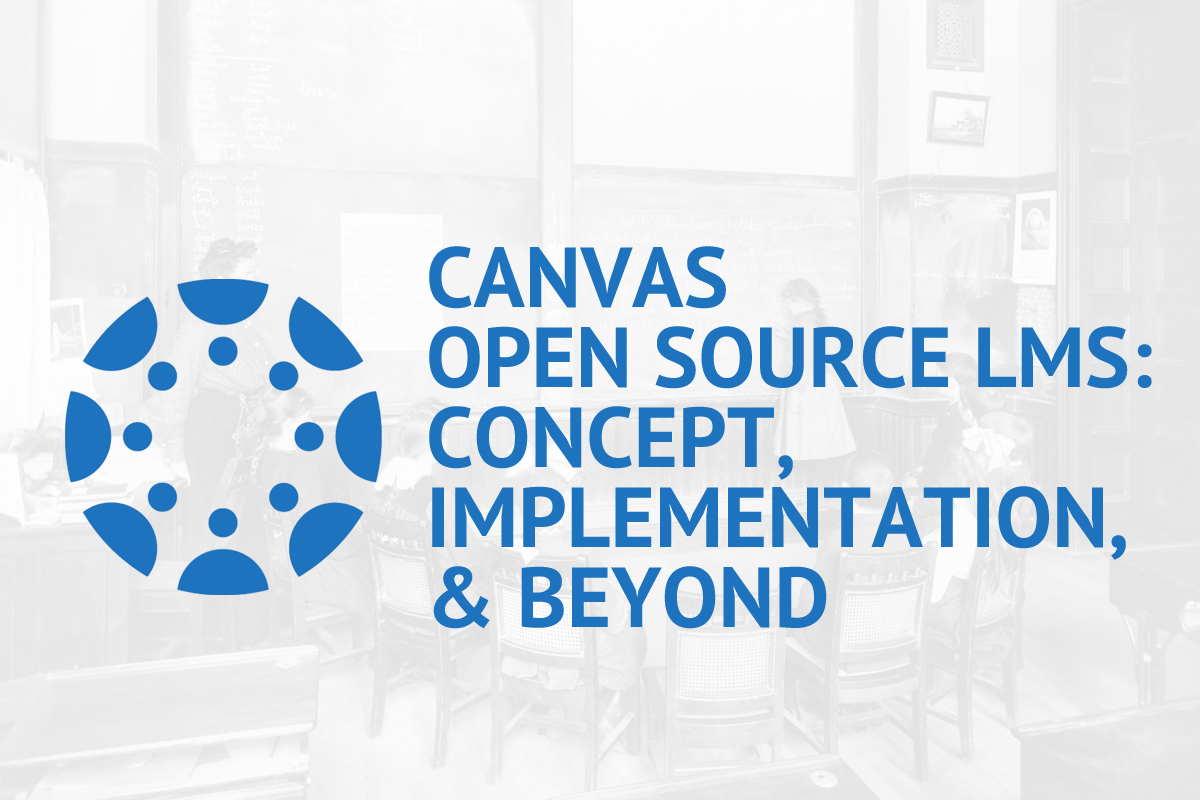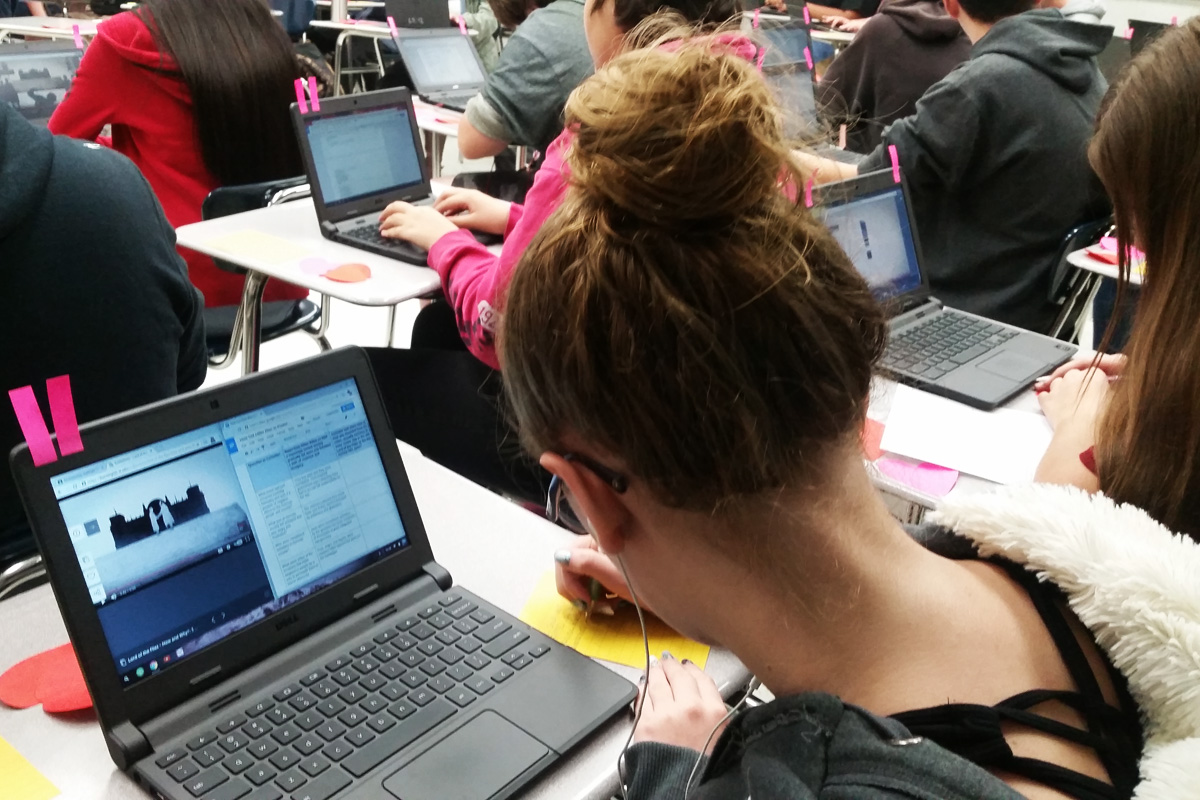This piece was based on a presentation we delivered at the 2017 Ed-Fi Data Summit in Austin TX. It is a summary of our work with Learning Tapestry in New Mexico to build and deploy the Canvas Open Source Learning Management System and then move two education agencies, their users and their courses from Blackboard and D2L Brightspace to their new open source LMS.
Need
In 2016, both the New Mexico Public Education Department and the state’s largest school district, Albuquerque Public Schools (APS), found themselves with diminishing budgets to sustain two separate full-feature LMS solutions.
They needed an option that would significantly cut costs but not reduce features for their constituents and statewide course deployments.
Canvas has a growing market share and is the fastest growing enterprise level learning management system. Instructure also releases a full open source version of the Canvas LMS as freely available platform.
[fusion_separator style_type=”none” hide_on_mobile=”small-visibility,medium-visibility,large-visibility” class=”” id=”” sep_color=”” top_margin=”20px” bottom_margin=”” border_size=”0″ icon=”” icon_circle=”” icon_circle_color=”” width=”” alignment=”center”][/fusion_separator]

Source: LISTedTECH LMS database under agreement with MindWires Consulting
[fusion_separator style_type=”none” hide_on_mobile=”small-visibility,medium-visibility,large-visibility” class=”” id=”” sep_color=”” top_margin=”20px” bottom_margin=”” border_size=”0″ icon=”” icon_circle=”” icon_circle_color=”” width=”” alignment=”center”][/fusion_separator]
Solution
Both agencies wanted to take advantage of the application-rich, flexible platform without introducing an ongoing, steep annual budgetary item. So we partnered with Learning Tapestry to examine the Canvas open source system. Our efforts focused on providing the following:
- a full-featured platform
- state-wide scalability
- open source architecture
- application-rich LTI options
- community of practice
- customizable
- cost effective
[fusion_separator style_type=”none” hide_on_mobile=”small-visibility,medium-visibility,large-visibility” class=”” id=”” sep_color=”” top_margin=”20px” bottom_margin=”” border_size=”0″ icon=”” icon_circle=”” icon_circle_color=”” width=”” alignment=”center”][/fusion_separator]
[irp posts=”7979″ name=”Navigation North Named Leading Web Development Agency”]
[fusion_separator style_type=”none” hide_on_mobile=”small-visibility,medium-visibility,large-visibility” class=”” id=”” sep_color=”” top_margin=”20px” bottom_margin=”” border_size=”0″ icon=”” icon_circle=”” icon_circle_color=”” width=”” alignment=”center”][/fusion_separator]
To move forward with these implementations, we moved through deliberate, phased steps including initial needs assessment, environmental scans, modeling, prototyping, building, testing, migration, staff training, and final launch for both Canvas open source system deployments.
Double The Tech
On a technical note, we originally anticipated both agencies would reside on the same core instance, but we learned they wanted completely separate systems. APS serves the initial hosting for both systems with readily available capacity, virtual machines in place, flexible system requirements and configurations.
- load-balanced across multiple front-end web servers
- separate servers for cache, utility, and database
- network storage for shared files, logs, and backup
- centralized monitoring services provided by Zabbix
- all powered by open source applications and services
The Easy Part – System Configuration

Learning As We Go
Not everything was apparent from the beginning of this project. Here are some things we learned along the way:
- Not all of Canvas’ advertised features are available in the open source version
- We had to build a custom Desire to Learn (D2L) course importer
- Blackboard common cartridge exports transferred reasonably well
- SIS data auto-integration is locked at administrative level
- SIS data migration into Canvas was fairly seamless, while pulling user data back out was tricky
- Clever has a development integration fee per month, per school site
[fusion_separator style_type=”none” hide_on_mobile=”small-visibility,medium-visibility,large-visibility” class=”” id=”” sep_color=”” top_margin=”20px” bottom_margin=”” border_size=”0″ icon=”” icon_circle=”” icon_circle_color=”” width=”” alignment=”center”][/fusion_separator]
[irp posts=”7100″ name=”What Supports EdTech Project Success?”]
[fusion_separator style_type=”none” hide_on_mobile=”small-visibility,medium-visibility,large-visibility” class=”” id=”” sep_color=”” top_margin=”20px” bottom_margin=”” border_size=”0″ icon=”” icon_circle=”” icon_circle_color=”” width=”” alignment=”center”][/fusion_separator]
System Readiness & Training
Given a very small window between course migrations, user account population, and launch – we built orientation as an actual Canvas course. We then had staff learn while working with their own content all in one shot, rather than simply providing a demonstration.
[fusion_separator style_type=”none” hide_on_mobile=”small-visibility,medium-visibility,large-visibility” class=”” id=”” sep_color=”” top_margin=”20px” bottom_margin=”” border_size=”0″ icon=”” icon_circle=”” icon_circle_color=”” width=”” alignment=”center”][/fusion_separator]

[fusion_separator style_type=”none” hide_on_mobile=”small-visibility,medium-visibility,large-visibility” class=”” id=”” sep_color=”” top_margin=”20px” bottom_margin=”” border_size=”0″ icon=”” icon_circle=”” icon_circle_color=”” width=”” alignment=”center”][/fusion_separator]
Future Growth
LTI / APPs
- OER Content Repository
- #GoOpen Node (115,000 learning objects)
- User’s Owned Resources
SIS Management
- Dynamic, Two-Way
- Ed-Fi Integration to replace Clever and handle data in / data out capability
- Proposed SIS management:

Course Sharing
- Community Best Practices
- Create a shared course directory as Canvass OSS Commons
[fusion_separator style_type=”none” hide_on_mobile=”small-visibility,medium-visibility,large-visibility” class=”” id=”” sep_color=”” top_margin=”20px” bottom_margin=”” border_size=”0″ icon=”” icon_circle=”” icon_circle_color=”” width=”” alignment=”center”][/fusion_separator]
[irp posts=”7049″ name=”4 Reasons Students Love The Smithsonian Learning Lab”]
[fusion_separator style_type=”none” hide_on_mobile=”small-visibility,medium-visibility,large-visibility” class=”” id=”” sep_color=”” top_margin=”20px” bottom_margin=”” border_size=”0″ icon=”” icon_circle=”” icon_circle_color=”” width=”” alignment=”center”][/fusion_separator]
Results!
[fusion_builder_row_inner][fusion_builder_column_inner spacing=”” center_content=”no” hover_type=”none” link=”” min_height=”” hide_on_mobile=”small-visibility,medium-visibility,large-visibility” class=”” id=”” background_color=”” background_image=”” background_position=”left top” background_repeat=”no-repeat” border_size=”0″ border_color=”” border_style=”solid” padding=”” animation_type=”” animation_direction=”left” animation_speed=”0.3″ animation_offset=”” type=”1_3″]
Robust
- Enterprise-class LMS
- Scalable statewide
- Comprehensive tools
[/fusion_builder_column_inner]
[fusion_builder_column_inner spacing=”” center_content=”no” hover_type=”none” link=”” min_height=”” hide_on_mobile=”small-visibility,medium-visibility,large-visibility” class=”” id=”” background_color=”” background_image=”” background_position=”left top” background_repeat=”no-repeat” border_size=”0″ border_color=”” border_style=”solid” padding=”” animation_type=”” animation_direction=”left” animation_speed=”0.3″ animation_offset=”” type=”1_3″]
Integrated
- Plays nicely with external SIS data
- Rich, diverse application library
[/fusion_builder_column_inner]
[fusion_builder_column_inner spacing=”” center_content=”no” hover_type=”none” link=”” min_height=”” hide_on_mobile=”small-visibility,medium-visibility,large-visibility” class=”” id=”” background_color=”” background_image=”” background_position=”left top” background_repeat=”no-repeat” border_size=”0″ border_color=”” border_style=”solid” padding=”” animation_type=”” animation_direction=”left” animation_speed=”0.3″ animation_offset=”” type=”1_3″]
Cost Effective
- Reduced initial costs over 60%
- Reduced ongoing annual costs by 90%
[/fusion_builder_column_inner][/fusion_builder_row_inner]
Interested In Learning More?
Reach out to our team to talk about how your agency can leverage the power of open source software like Canvas to reduce costs, improve connectivity, and provide the flexibility your educators and students need.



